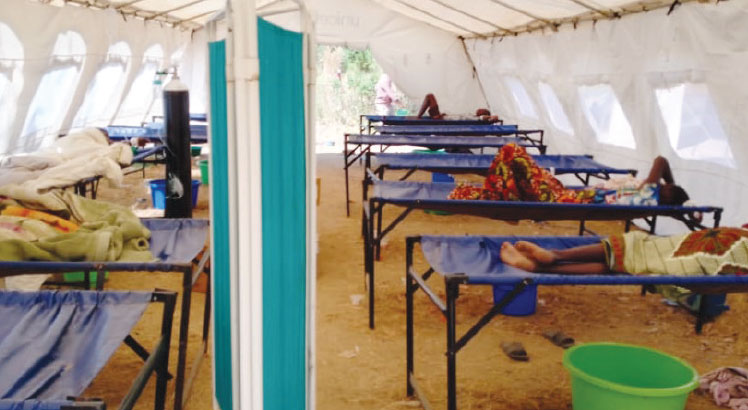Cholera kills 31 in 8 days in November
Cholera cases continue to rise with 31 deaths recorded in the first eight days of November despite government launching a K20 billion response strategy to stop its spread before the start of the rainy season.
Ministry of Health (MoH) spokesperson Adrian Chikumbe said in an interview yesterday that while the desire was to stop the spread before the onset of the rains, it is worrying that cases continue to increase.
He said: “It is not just about MoH. Preventing cholera is everyone’s responsibility and this is why you have seen Ministry of Education coming up with a ban on selling cooked foods within the school premises.
“Provision of safe water and sanitation is a domain of another ministry that must also do its part just like we are playing our part to both prevent and treat patients presented to us. So, if the plan is not working then each of the stakeholders ought to reflect on their role.”
On October 4 2022, MoH launched a two-month Cholera Response Plan to stop the spread of the outbreak before the rains start.

But over a month, our analysis shows that the situation on the ground has not changed as new cases continue to be recorded.
The ministry has also admitted that it is struggling to implement the plan, calling on other stakeholders to join hands to stop the pandemic which has spread to all the countries 28 districts.
From the day the plan was launched to November 8, 2022, 3 695 cases and 104 deaths have been recorded.
As of October 4, confirmed cases were at 3 804 with 110 deaths, but by November 8, the cases had jumped to 7 499 and 214, deaths.
Since the first case was reported in March this year to October 31 about 6 056 cases and 183 deaths were reported, translating to an average of 23 deaths a month.
Cholera is common in Malawi during the rainy season, but this time it has spread during the dry season.
Chikumbe said cholera can be present anytime where hygiene is compromised, but indicated that the ministry is making an assessment to understand why this is the case.
Malawi University of Business and Applied Sciences environmental health sciences lecturer Dr. Save Kumwenda described the current cholera cases as strange.
He said while it is not unusual to have cases during the dry season, having it in all the 28 districts is strange.
Kumwenda said: “Malawi used to have cholera in the dry season around Lake Chilwa. Other countries also have dry season cholera because water is scarce during this season and people are forced to look for water from unsafe sources.
“So, this cholera outbreak in Malawi is unusual because it affected almost all districts and has persisted for long time.”
Water and Sanitation Network executive director Willies Mwandira cast doubt if cholera could be stopped before the rains, saying other places are already experiencing the rains.
He said the slow implementation of the plan is largely due to resource constraints calling on donors to render a helping hand to contain the spread of Cholera before it gets out of hand.
The Nation analysis, as of November 8, shows that of the three regions, the Northern Region has the highest number of cases at 3 213 which is 43 percent of the total confirmed cases followed by the South with 2 229 and the Central Region with 1 550.
The five districts with the highest number of cases are Nkhata Bay with 1 245, which constitutes 16 percent of the total number of cases, Nkhotakota with 900, Rumphi with 874, Mangochi has 867 and Blantyre has 661 cases.
In terms of deaths, Nkhotakota tops the list with 41, Nkhata Bay has 35, Blantyre has 26, Mangochi has 16 and Rumphi has 15.





